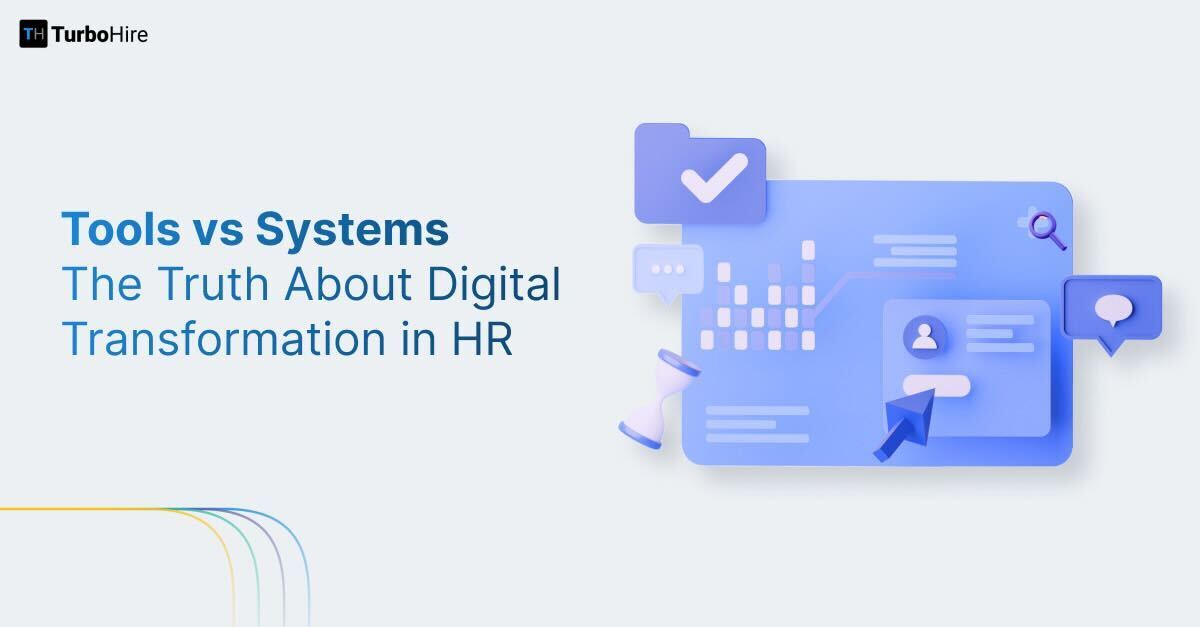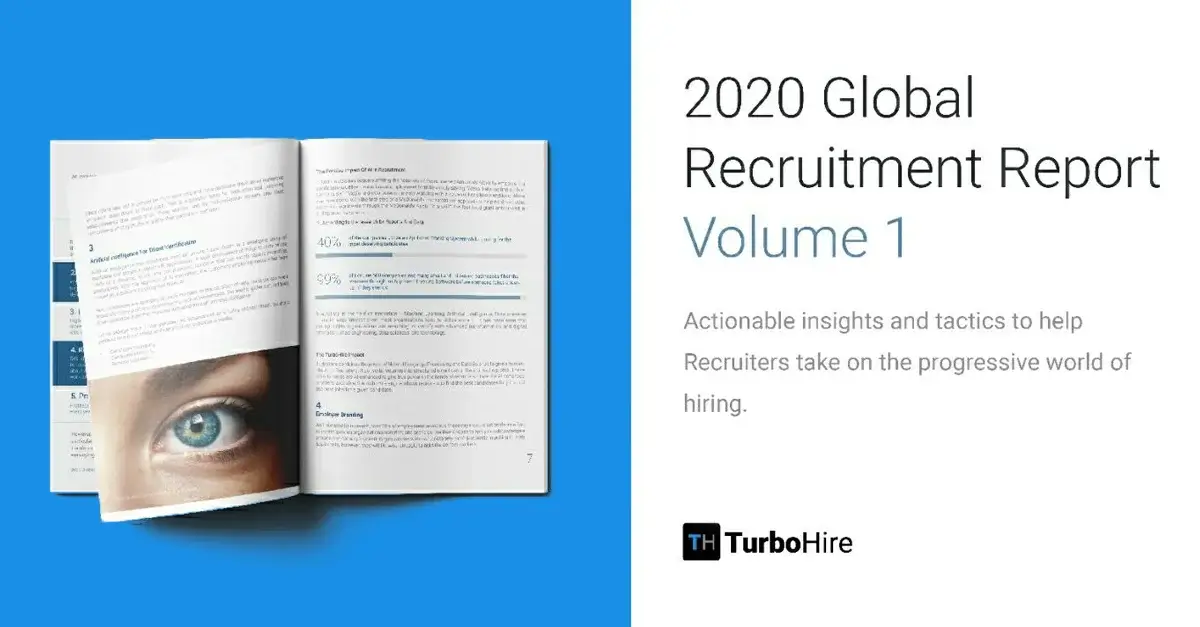Recruiting Metrics are estimations used to measure employing productivity and streamline the way towards recruiting candidates for an organization. At the point when utilised effectively, these measurements help to assess the hiring cycle and whether the organization is employing the best candidates.
What are Recruiting Metrics?
Recruiting Metrics are the key to surveying the performance of your recruitment cycle. It is critical to have quantifiable hiring objectives and precise information that keeps track of your performance and reveals to you where you stand, particularly when you’re attempting to make game-changing recruits.
The increase in competition in the recruitment market has initiated the beginning of a technology revolution in the talent acquisition industry, which all organizations – small or big have endorsed. The plenitude of information gave by this innovation is giving HR teams more force than ever to settle on educated choices with regards to candidate hiring and talent securing.
Recruiting Metrics alludes to estimations used to accumulate, investigate and track recruiting achievements and enhance the employing processes to settle on more educated choices and get the best degree of profitability.
Recruiting Metrics that aren’t attached to explicit business objectives will not be as compelling at assisting with improving business achievement. While metrics gathering is significant, you must make it certain to move past gathering and investigating metrics so you can make a move when upgrades are required. Focussing on fewer recruiting metrics that are important to your hiring success will be much simpler than covering each part of the hire and not having the option to take any other action.
What Do Recruitment Metrics Inform Recruiters?
It is important to understand what exactly can recruiters learn or be updated about from recruiting metrics. Start by considering the following points:
- Does the job description that you provided with the listing accurately represent the actual job details?
- Is your potential candidate the right fit for the job?
- How long does it take to hire employees?
- Is your recruitment journey engaging, transparent, and efficient?
- How much money are you spending on the entire hiring process?
- Which places are the candidates looking for your job postings?
- How efficient are you in the hiring process?
- How well does your new employee perform at the job?
- How many candidates are applying for your job postings?
With the help of these points, you can use recruiting metrics on your real-time dashboard and generate astonishing amounts of insights.
Are Recruiting Metrics and Recruiting Report the same?
Recruiting metrics are the goals or key metrics you set in your recruiting reports. They are not the same because recruiting metrics are a sub-set of a recruiting report.
Learn about Recruiting Report and their importance in hiring.
While recruitment metrics are certainly good to report to management and use to improve the reporting process, employers today need to use metrics for more than reporting. They have to use them as part of an actionable improvement process to get the most value from them.
A quarterly review of recruiting metrics with improvement goals ensures metrics are not only gathered but used to support improvement. When you need your recruiting process to support employee engagement and retention, strategic goals, and a continuous improvement process, you need to choose better-recruiting metrics and focus on the ones that are most important to your hiring success.
Why Are Recruiting Metrics Important To Hiring?
For better-recruiting outcomes, you need to roll out certain improvements in your hiring process. Paying more attention to recruiting metrics is one of the most important improvements you can make to your company. You need to accumulate and keep up the correct sort of information, for example, where your applicants are coming from, how they go after your openings, and the ranges of skills a candidate has.
Savvy utilization of hiring metrics empowers you to analyze information from your recruitment cycle against corporate objectives for the sort of knowledge you need to keep up and improve your hiring processes. If you understand the qualities of your top employees you adjust recruitment strategies accordingly you can ensure that you hire more of them.
The amount of hiring action and the nature of recruits delivered by a hiring group are significant figures to comprehend. These Recruiting Metrics can be utilized to pass judgment on the performance of the hiring teams, keep a check on the quality of the brand of employment, and create successful and cost-productive marketing measures for hiring.
Recruiting Metrics are crucial to business success as it highlights to everyone that recruiting is not a one-time task finding a good candidate, but is a core competency that constantly brings the best people in and measures their contributions.
Below we discuss 8 of the most important Recruiting Metrics that directly affect the hiring process of an organization.
8 Recruiting Metrics That Directly Impact Your Hiring Practice
The potential list of all the metrics a company might collect is long. We found the top 8 Recruitment Metrics that talent acquisition professionals use to assess the success of their recruiting process. Let’s discuss these metrics that directly impact your hiring process and you definitely need to keep track of them to see your recruitment ROI:
1. Hiring Quality
Hiring Quality, often estimated by a candidate’s performance rating, gives an indication of the first-year performance of a candidate.
High-performance ratings received by candidates are an indication of a good hire while the opposite holds for candidates receiving low-performance ratings.
The input for the Success Ratio of a company is hiring quality. A high success ratio indicates that almost all the candidates recruited have performed well. Success Ratio is the ratio of the number of hired candidates who have performed satisfactorily to the total number of candidates hired.
The hiring quality is the differentiation between more applicants and top-level applicants. This hiring metric uncovers if hiring teams are burning through their significant time and efforts looking for top talents or indeed making the ideal usage of accessible assets.
2. Applicant to Hire Ratio
The Applicant-to-Hire ratio is the ratio of the number of candidates applying for a job to the number of candidates hired.
Your Applicant per hire metric is one of the most important talent acquisition metrics, as it will demonstrate your ability to understand your candidates’ preferences and priorities.
If your applicants per hire rate are consistently high, it’s a clear indication that your job specs are transparent, your hiring process is fluid, and you are taking measures to tailor your offers to meet candidate needs as well as expectations.
Organizations with under 100 workers have an applicant-to-hire proportion of 1 in every 94 applicants, though employers with in excess of 1,000 employees normally need to assess 129 up-and-comers before they make a hire.
Making use of targeted methods like programmatic advertising can be an easy way to get successful numbers from this metric. When considering these strategies and the recruitment marketing of a company, try to anticipate not only the searches of the top candidates while thinking of a job change, but also the searches related to career development.
3. Sourcing Channel
The smartest recruiters use the sources of hire as one of the key recruitment metrics. Candidates are using lots of digital channels to research and find your company. So it only makes sense that the smartest recruiters use multiple channels, whether it’s LinkedIn, advertisements, and social networks.
You visualize the sources of hire on your recruitment digital dashboard. It indicates information such as:
- The number of applicants that are originating from each source.
- Of all the applicants that came to the specific channel, how many were qualified?
With this recruitment metric, you can better understand your hiring expenditures, and stop using channels that are not bringing in interested candidates, which will save you some money. Likewise, you can spend more money on the channels that are actually bringing your organization the most interested, qualified people who are looking to be a part of your company.
Lately, recruiters have been using various sourcing channels such as job boards, career sites, referrals, social networking sites, and so on. An efficient method of analyzing all the channels is by comparing the percentage of applications with the percentage of impressions on the jobs. Hiring teams can understand how effective these channels are and to which source they should pay more attention.
4. Hiring Time
The number of days between the second an applicant is approached and the second the applicant accepts the position is represented by hiring time.
At the end of the day, it quantifies the time it takes for somebody to travel through the employing cycle whenever they’ve applied. Hiring time hence gives a strong sign of how the recruiting team is performing.
Time to fill metrics promote stability within your organization. It measures the amount of time it would take to locate and hire a potential new employee. The process begins with a requisition being approved by a company and extends to the point when the candidate has completed the necessary background checks. Essentially, it gives managers the opportunity to understand how long it takes to fill a job position.
This is important because hiring employees can often be a lengthy process involving multiple steps. The most successful organizations want to take measures that will considerably reduce their metric ‘time to fill’ figure while keeping a good quality of hire at the same time – otherwise, this is time wasted.
Digging into this recruitment metric will let you know the following about your recruitment process:
- You get to know when you are hiring the right fit.
- Your speed and efficiency when you hired the right candidate.
- What the existing performance bottlenecks are in your sourcing process.
5. Hiring Cost
The hiring cost gauges the normal cost brought about on filling a job from sourcing to onboarding.
For huge organizations, the enlistment cost majorly affects the primary concern and for a small organization; it can represent the deciding moment of the yearly financial plan.
Understanding how much money you are spending during the hiring process can be a very efficient way to allocate spending. It’s important to look at all of your costs when hiring an employee so that you can learn where you can cut costs during the hiring process without affecting the candidate’s quality or experience level.
Here are some of the factors that the hiring metric ‘cost per hire’ helps discover:
- Recruitment time costs,
- Costs of managers and employees that are involved in the hiring process,
- Administrative costs are linked to the process of training and implementing new employees.
This recruitment metric is straightforwardly associated with time to hire. For example, the quicker a position gets filled; the lower is the cost of talent securing. Cost per hire comprises various cost structures which can be partitioned by inside and outer cost. By measuring every one of them you can figure the total hiring cost.
6. Hiring Manager Satisfaction
Ranked as the 3rd most important hiring metric by the Global Recruiting Trends Report by LinkedIn, hiring manager satisfaction is used by 43% of organizations to measure the hiring quality.
In accordance with the nature of hire, HR manager satisfaction is another metric that is characteristic of a successful hiring metric. At the point when the hiring manager is happy with the new up-and-comers in his group, the applicant is probably going to perform well and fit well in the group. As such, the applicant is bound to be an effective hire.
7. Candidate Experience
Candidate experience metrics will empower you to drill down into specific areas of your recruitment process by understanding the overall satisfaction levels of your candidates.
Using recruiting metrics template to quantify your candidate experience statistics will offer the level of insight you need to optimize specific areas of your hiring journey – from initial application and first interviews to assessments, digital communications, and beyond.
- 60% of candidates have stated that timely communication during the application process makes a positive impact on their minds.
- More than 80% of candidates say that a single negative experience can change their decision even at the last minute.
In order to ensure a positive candidate experience throughout your hiring process, engaging every candidate, and ensuring that they remain informed of their progress, increases candidate satisfaction, and keeps them from considering other opportunities.
8. Tracking Pre-Hire Metrics
A powerful measure of the quality of hire can’t be limited to post-hire measurements. To get the full picture, organizations need to incorporate pre-hire measurements. Focussing in on pre-hire measurements assists managers with zeroing in on specific sources of employing issues originating from hiring before they sway the quality of hire.
Can You Improve Your Recruitment Metrics With TurboHire?
Yes.
Let’s give you insight into the cumulative improvement provided by the TurboHire platform across 3 important recruiting metrics such as:
- Time to Hire – time elapsed between engaging a candidate and accepting an offer.
- Cost to Hire – money spent on making a hire.
- Quality of Hire – value a new hire brings to the organization.
1. Time to Hire improvement by TurboHire
| Candidate Sourcing | Improvement in Job Postings | 75% |
| The improvement between Job posting and screening | 67% | |
| Candidate Screening | Improvement in screening candidates | 75% |
| Candidate Interview | Improvement in the interview stage | 84% |
| Decision making | Improvement in the final decision | 56% |
Thus, using TurboHire the time spent on making a hire will be reduced from 20.16 days to 4.69 days which is a 75% improvement.
2. Cost to Hire improvement provided by TurboHire
The cost involved in the recruitment process are due to the following factors
- Cost of the ATS.
- Cost of posting jobs on Job boards.
- Cost of video interviewing platform.
- Time Cost of the recruitment process.
It is a known fact that about 30% of the total jobs posted on job boards are repetitive jobs. TurboHire has built a re-target feature that will help the recruiters use the existing database to search for suitable candidates if the jobs are repetitive. This has a significant cost implication as this will negate the posting of jobs and waiting for the candidate’s application. So, with a click of a button, you will get matching and eligible candidates from your old database for your new job.
The second cost improvement provided is in the Audio/Video interview provision built inside the platform, which negates the necessity for a separate video interview software and the cost associated with that.
The time improvement will result in time cost, which is the wages provided to recruiters and interviewers. Considering all these cost factors, the platform will provide a 72% reduction in Cost to Hire.
3. Quality of Hire improvement provided by TurboHire
The quality of hire is the value that a new hire adds to the organization. From the point of the recruitment process, the quality of hire can be broken into two factors they are quality of candidate and quality of the process. The quality of candidates depends on several factors such as the following
- Source of Candidate
Compared to the current scenario, TurboHire provides a significant improvement in the quality of candidates. Using the Social media publishing of Jobs, publishing in sites like LinkedIn will attract more quality candidates compared to the job boards. - Screening of Candidates
The AI-based resume parsing engine and AI filters help the recruiters find quality candidates with a perfect match in qualification skills and experience in a similar industry. - Functional Fitness
TurboHire features behavioral insight that uses Neuro-Linguistic Programming to decipher a candidate’s functional fitness by analyzing various traits of the candidates. - Technical Fitness
In TurboHire using AI-based screening and filtering will result in more candidates getting a better score in the interview which indicates the strong technical know-how of the candidates. - Social Profile of Candidate
CVs can be faked but not social profiles. Using the social profile fetching feature the recruiter can understand more about which can help in screening the candidates.
Return of Investment on using TurboHire’s Recruitment Metrics
The quality of the process has an indirect bearing on the quality of candidates and is dependent on several factors.
- 1) Faster time to hire: The TurboHire platform reduces the time to hire. Lesser the time to hire better is the quality of the process and better will be the quality of candidates as good candidates are hired faster.
- 2) Clear communication with candidates: Using TurboHire, the recruiter can make frequent communication with candidates via inquiry/mails/SMS. Involving candidates in the process radiates a good opinion on the recruitment process which helps the recruiter in employer branding.
- 3) Satisfactory review given by candidates: The platform allows the recruiter to collect feedback from the candidates on the recruitment process which could be used to streamline the process, and which can help in both employer branding and selecting quality candidates.
- 4) Re-targeting of jobs: The re-targeting of jobs helps the recruiter re-target existing candidates on the platform for a new vacancy. This method can help in finding better functional technical fit candidates and reduces the time to hire.
All these above features and functionality will help the TurboHire platform improve the quality of hire by 60
Why do you need to Assess your Recruiting Metrics?
Eventually, data and analytics instruments are quickly developing. Innovation and information are changing the manner in which organizations create techniques that sway their prosperity. These strategies stretch out to hiring procedures that are figured around this continually changing universe of information.
To create the sort of smart, solid methodologies that are affecting the eventual fate of organizations, HR divisions and managers are adapting to the use of recruitment metrics.
We live in the period of data. Now, that it’s conceivable to use hiring analytics by accepting the force of dynamic recruitment metrics, you can assume responsibility for viably hiring new workers, assigning hiring measure costs with knowledge, estimating candidate experience, and understanding the inspiration of the candidate’s application.
To press every single drop of significant worth from your recruiting metrics, you need up-to-date hiring dashboards that will improve your hiring-based business insight arrangements and, at last, push you in front of the pack.
The Aftereffect of Good Recruiting Metrics on Hiring
Using information from recruiting metrics and performance isn’t just about discovering high-level candidates; it’s additionally about utilizing these metrics to recount the tale of your organization, your candidates, and your recruiting methods so you can improve your present talent acquisition measure.
The aftereffects of reinforcing these metrics incorporate improving the quality of hire, decreasing enlistment costs, shortening the time-to-fill timeline, and expanding worker retention. As such, you can’t simply be reactive with regard to handling recruiting metrics. You need to make several moves to ensure that the individuals that you recruit later on are probably going to be incredible employees. Measure the Recruiting Metrics of your organization with TurboHire to evaluate if you are getting the ROIs in your hiring investments or not.




















